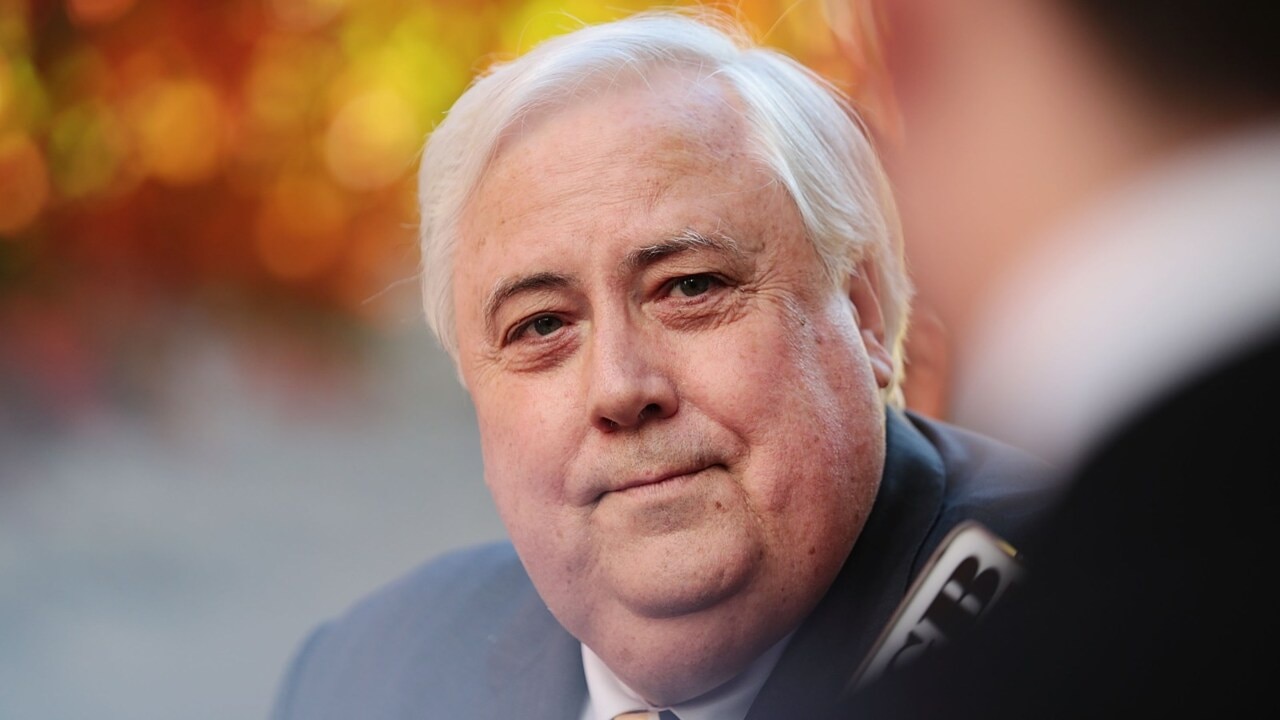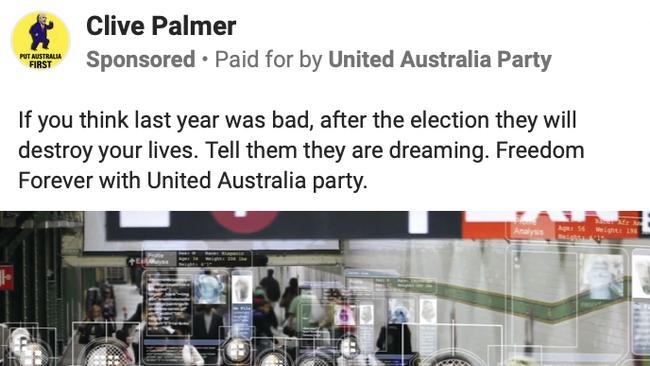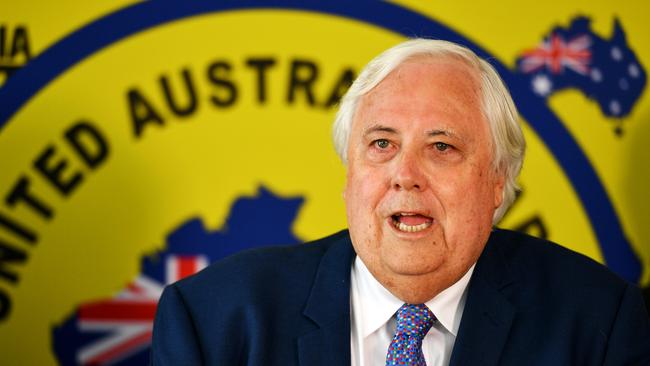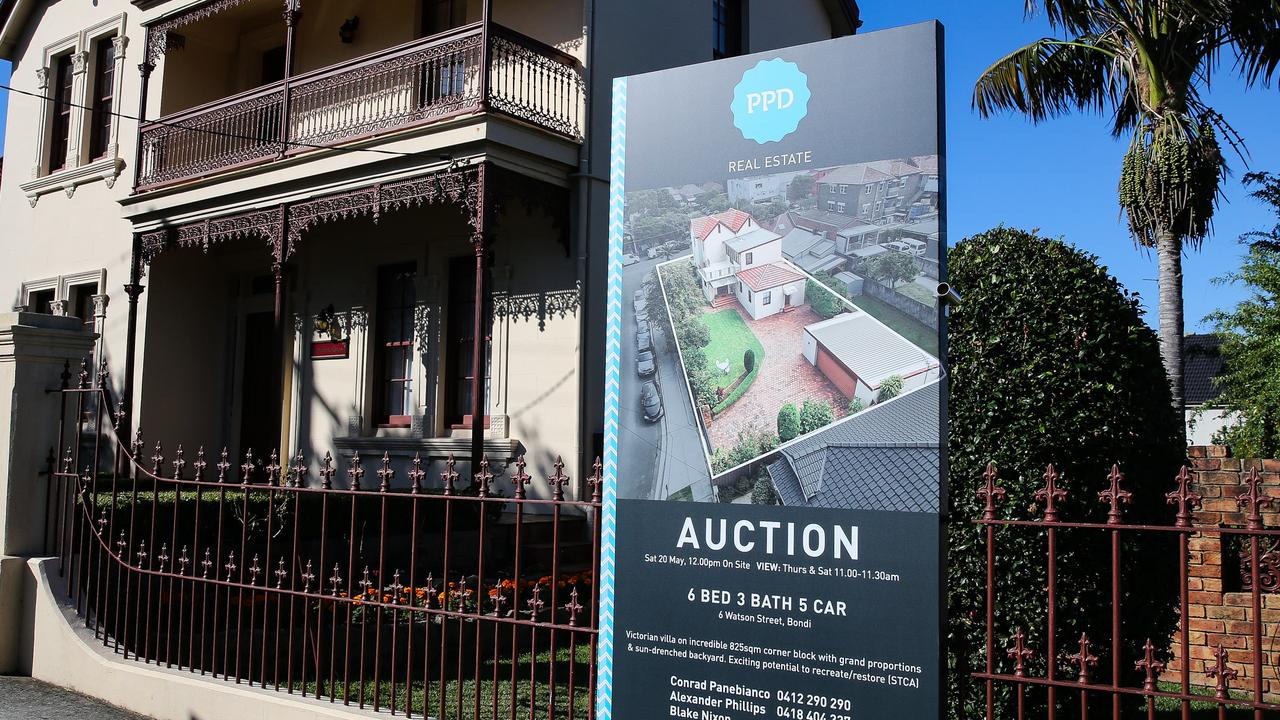Federal Election 2022: Clive Palmer leads social media online ad splurge
Aussies will be ‘inundated’ with election ads on social media, with experts warning of misinformation and fake news. SEE THE LIST OF BIGGEST SPENDERS.

Federal Election
Don't miss out on the headlines from Federal Election. Followed categories will be added to My News.
Australians should brace for an aggressive, $30 million wave of political advertising across all social networks over the next three months as spending soars before the federal election and misinformation rages online.
Figures from Facebook, Google and Snapchat show millions of dollars have already been splashed on political ads in recent months, with spending dominated by Clive Palmer and the United Australia Party promoting anti-vaccine mandate and anti-lockdown videos.
But unions, far-right and climate-focused lobby groups are also among the top spenders on social media before a potential May election, and marketing experts warn greater regulations are needed to protect Australia’s democratic process and prevent voter burnout.
New figures from Facebook’s parent company Meta shows political and lobby groups have spent more than $7 million on political advertising across its platforms in the past 90 days, including more than $513,000 by the United Australia Party and another $161,000 by its leader, Clive Palmer.

The party also dominates spending with Google and YouTube, where the party has splashed $6.7 million since November 2020 — dwarfing spending by Labor, the Greens and the Liberal Party.
UAP’s Facebook ads include promotions for rallies against “big tech,” while on YouTube the party spent more than $100,000 advertising a five-minute parliamentary speech by Senator Craig Kelly protesting children’s Covid vaccines.
Three UAP ads were removed for violating Google’s advertising policies.
Other minor parties spending big on social media before the election include Advance Australia that has advertised against vaccine mandates and ABC funding, and the Australian Citizens Party promoting a new Bradfield Scheme.
Independent candidates and lobby groups have also splashed tens of thousands of dollars in political ads this year, including Shell, Greenpeace, Climate 200, Thrive by Five and Australian Unions.
In contrast to Google and Meta, Snapchat has seen only two political ads this year, and Twitter and TikTok do not allow political ads in Australia.

Australian National University political marketing expert Dr Andrew Hughes said Australians should expect to be overwhelmed with online political advertising in 2022, with between $25 million and $30 million spent across all the major platforms and an unprecedented “volume of ads”.
“You’re going to feel inundated with ads, you’ll be tired of it and you’ll want to switch off,” he said.
But Dr Hughes said this advertising would be irresistable for political candidates and parties to avoid, with YouTube providing unavoidable video views and Facebook allowing candidates to target specific voters.
The risk of misinformation in social media ads was also high, he said, as misleading videos were often only removed after human moderators reviewed them.
A recent experiment by Reset Australia found Facebook approved five ads with election disinformation within 24 hours, though the company’s public policy head Josh Machin said the ads “did not go live”.
But digital marketing expert Meg Coffey said many political ads already on social media were exploiting time-poor Australians who did not check the source of information.
“There are ads that are not misinformation but they’re misleading,” she said.
“These groups know how to pick sensitive subjects and use them as a scare tactic.”
Dr Hughes said Australia needed limits on the number of political ads allowed during a campaign, whether parties could pay influencers without disclosure, and whether social networks should be part of the political advertising blackout three days before polling day.
“It’s an arms race and that’s why putting a cap on social media ads would even up the playing field,” he said.
Australian political ads on Facebook since November 26, 2021: $7.77 million
TOP SPENDING PARTIES AND CANDIDATES
1. United Australia Party: $513,755
2. United Australia Party Senate candidate Clive Palmer: $161,386
3. Advance Australia: $119,782
4. Independent candidate for Kooyong, Dr Monique Ryan: $72,734
5. Independent candidate for Wentworth, Allegra Spender: $53,304
6. South Australian Liberal Premier Steven Marshall: $53,137
Australian political ads on Google since November, 15, 2020: $7.39 million
TOP SPENDING PARTIES AND CANDIDATES
1. United Australia Party: $6.76 million
2. Australian Labor Party: $92,700
3. Australian Labor Party (SA): $66,900
4. The Greens (WA): $42,000
5. Liberal Party (WA): $41,100
6. Liberal Party (Tas): $38,250
Australian political ads on Snapchat in 2022: $73,088
TOP SPENDING PARTIES AND CANDIDATES
1. Labor Senator Kristina Keneally: $449
2. Pauline Hanson’s One Nation teen candidate Sam Schiever: $49
FACEBOOK POLITICAL AD SPENDING BY STATE SINCE NOVEMBER 26, 2021
NSW: $2,532,785
VIC: $1,741,090
QLD: $1,554,063
SA: $784,899
TAS: $198,566
WA: $644,143
ACT: $197,056
NT: $67,341
GOOGLE POLITICAL AD SPENDING BY STATE SINCE NOVEMBER 15, 2020
NSW: $2,228,700
Vic: $1,793,550
Qld: $1,589,700
WA: $816,300
SA: $590,100
Tas: $220,200
ACT: $105,300
NT: $48,900





